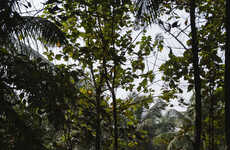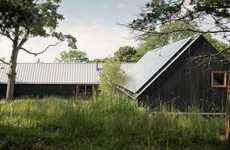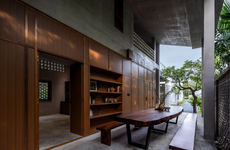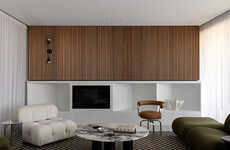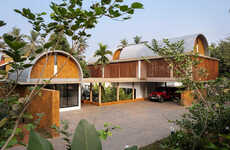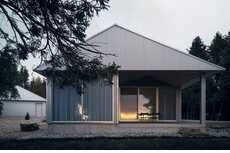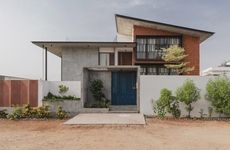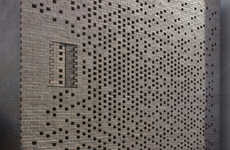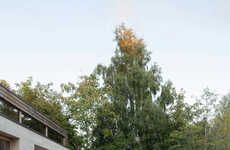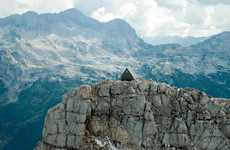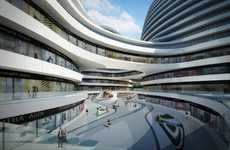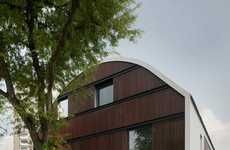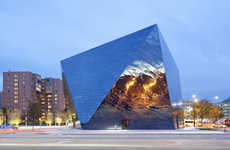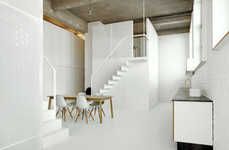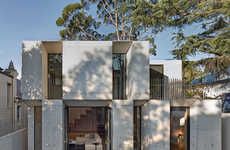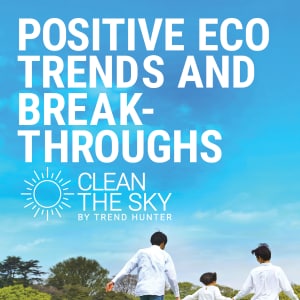
The Wind Vault House by Wallflower Keeps Naturally Cool
Meghan Young — July 22, 2013 — Art & Design
References: wallflower.sg & contemporist
The Wind Vault House might look like a contemporary barn with its rounded roof and overall large presence, but it was clearly inspired by a different type of structure by the sound of its name. Its expansive floor-plan nevertheless makes it the perfect home for a big family.
A three floor bungalow, the Wind Vault House boasts a total of seven luxurious bedrooms. Described as a "raised reinforced concrete tube," by the designers, the north and south ends have been left open in order to allow for a passive cooling system by way of the natural breeze from the coast. The use of cement helps the Wind Vault House to resist the east-west heat gain as well.
Designed by Wallflower Architecture + Design, the Wind Vault House is located in Singapore.
A three floor bungalow, the Wind Vault House boasts a total of seven luxurious bedrooms. Described as a "raised reinforced concrete tube," by the designers, the north and south ends have been left open in order to allow for a passive cooling system by way of the natural breeze from the coast. The use of cement helps the Wind Vault House to resist the east-west heat gain as well.
Designed by Wallflower Architecture + Design, the Wind Vault House is located in Singapore.
Trend Themes
1. Contemporary Barn-like Residences - Opportunity for architects and designers to create modern homes that combine rustic charm with innovative features.
2. Passive Cooling Systems - Potential for developing and implementing eco-friendly cooling solutions in residential and commercial buildings.
3. Innovative Use of Cement - Opportunity for construction companies to explore new techniques and materials for heat resistance and energy efficiency.
Industry Implications
1. Architecture and Design - Architects and designers can explore new ways to incorporate nature-inspired elements in modern homes.
2. Green Building - Opportunity for sustainable building companies to promote and implement passive cooling systems in their projects.
3. Construction - Construction companies can explore new methods and materials for heat-resistant structures and energy-efficient buildings.
4.8
Score
Popularity
Activity
Freshness

